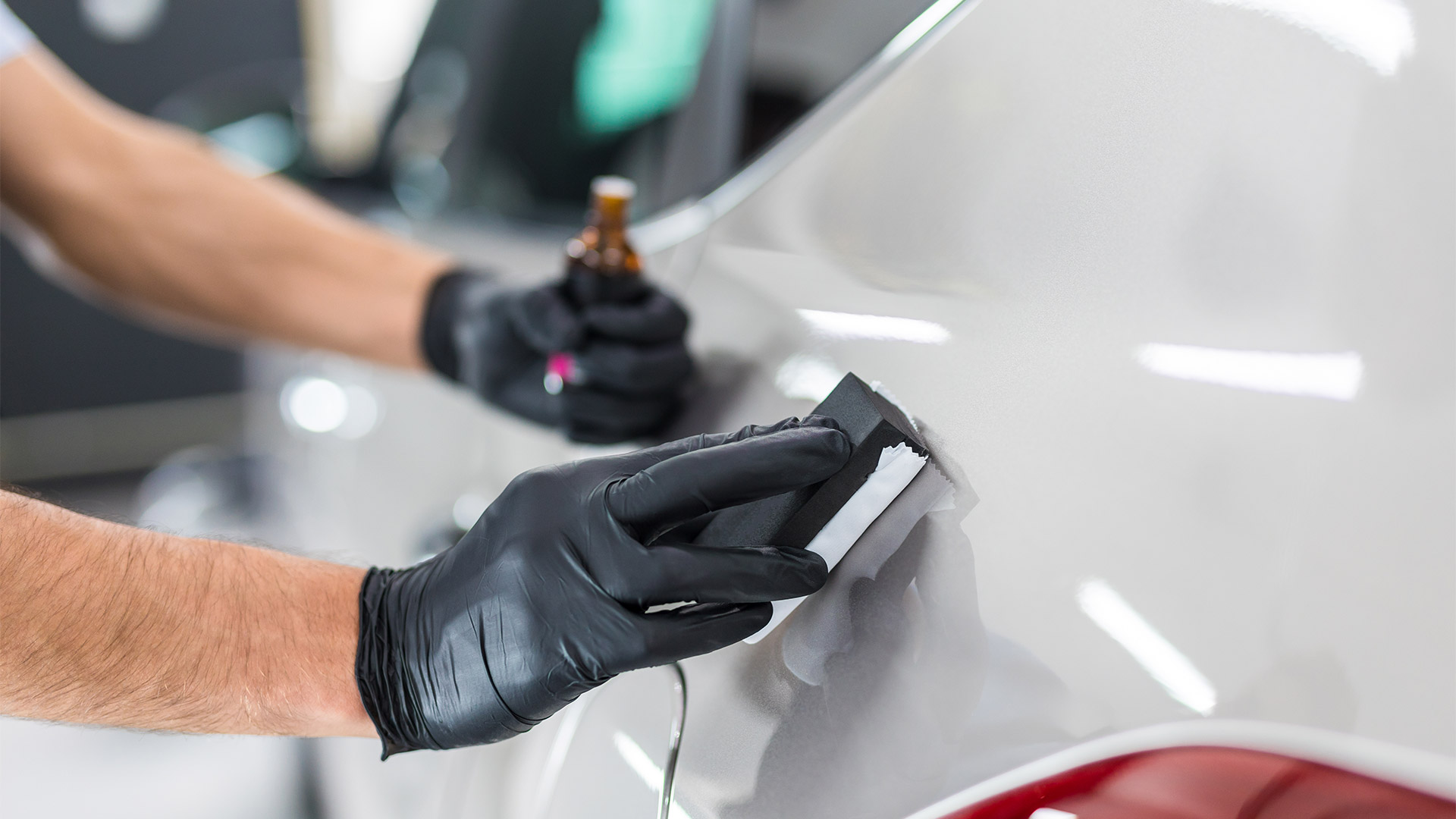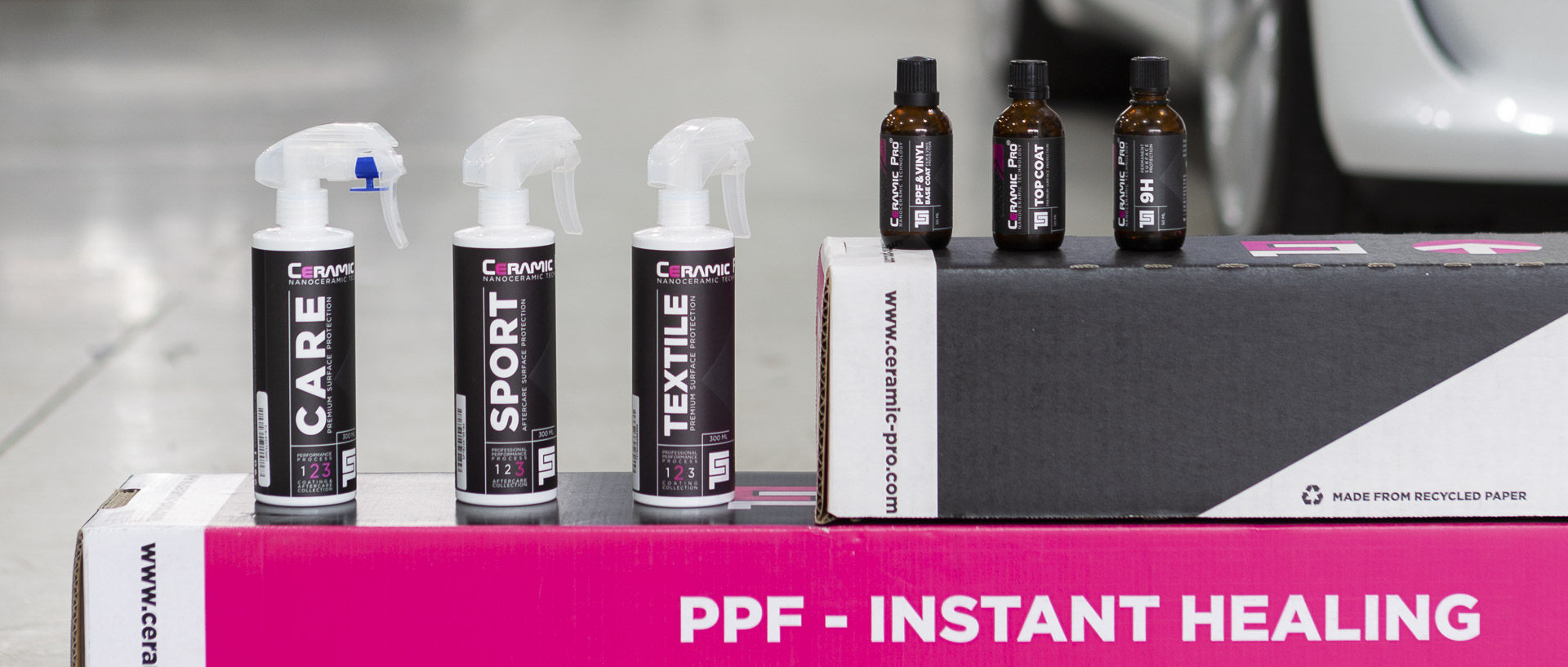Paint protection is about way more than simply looking good. In this article we will be breaking down the history and what the best paint protection product is and how you can get your vehicle protected today.
Sure, most people love a beautiful, shiny finish on their ride, but the real benefits of paint protection go way deeper than looks alone. In fact, the dollars and sense of applying a quality coating to your vehicle are really earned by protecting the second largest investment that you’ll ever make; your car. Yes, the world is an incredibly dangerous place for your humble automobile, and mother nature wields her elements like weapons of war that assault the paint on your vehicle. From penetrating UV rays to road salt and grime – your car takes a beating out there in the world.
So whether you’re an automotive buff who’s looking to get the most shine and gloss on your prized show car or just someone who cares about protecting your investment; paint protection is an easy way to ensure that your car is protected from whatever mother nature throws at it.
Don’t believe us? We’re going to cover everything you need to know about paint protection products, so you can be in the loop:
- History of Paint Protection Products
- What is a Ceramic Coating?
- The Growth of DIY Coatings
- Spray Ceramic Coatings
Paint protection has a rich and varied history that puts the power of research-focused science into the hands of car owners the world over so let’s get into the nitty-gritty and put you in the know!
History of Paint Protection Products
Did you know that car wax has been around since 1880? A full 6 years BEFORE the first automobile! Yes, ever since the advent of the automobile, proud owners have sought to protect their investments from the wrath of mother nature while simultaneously looking for that extra bump of shine and polish.
The first paint protection product was a paste wax product that was made in the small town of Bischofsheim, Germany. It was made of a combination of animal fats that was applied to the horse-drawn carriages as a method of protecting and beautifying the paint. Only 6 years later, a certain person by name of Karl Benz (yes, the person who would eventually put down the foundation for Mercedes – Benz) would invent the automobile and fundamentally change our modern collective lives for years to come.

Over the last century, the history of paint protection and paint sealant has advanced dramatically. There are even greater paint protection products on the market including paint protection film/ clear bra with self-healing properties.
From the simple applications of car wax to the more advanced paint correction techniques of polishing the car’s exterior, the advancement of these technologies may seem overwhelming. Here are some other interesting events and products that fill in the paint protection story:
1920 – 3M Invents waterproof sandpaper
1944 – Plastone invents Turtle Wax bottled car wash/wax
1970 – First Polymer Paint Sealant invented by 3M
1970 – Wide adoption of metallic paint with clear coat sees new needs in paint protection grow
1980 – Detailing clay sees widespread adoption all over the world
2000 – Ceramaclear invented by PPG becomes first ceramic polymer coating/ polymer paint sealant
2010 – Nanoshine LTD releases Ceramic Pro, a groundbreaking product that utilizes nano ceramic technology
What is a Ceramic Coating?
Never use carnauba wax ever again. Ceramic coatings are a range of surface protectant products that are designed to protect against blemish-causing agents of destruction. These agents can be visible or tangible such as dust and water or invisible like UV rays from our sun. They work on the basic principle of forming a chemical bond with a vehicle’s paint via an ultra-strong covalent bond. This makes the surface the coating is applied to incredibly tough and incredibly slippery! Let’s talk a little science here because those are the details that really matter when it comes time for top-notch paint protectant products.
Quality Ceramic Coatings like Ceramic Pro are made of two main components in various concentrations: titanium dioxide and silicon dioxide.

Silicon dioxide is made up of two of the most abundant chemicals on planet earth – silica and oxygen. When silicon dioxide is heated within the confines of the Earth’s crust – you get super hard quartz crystals. A very common usage of silicon dioxide is in the creation of ceramics where it is used due to its resistance to thermal expansion and its protective, hydrophobic properties (water repellent) when used as a glaze that forms under heat.
When a ceramic coating is applied to your vehicle’s paint (the topcoat) chemically bonds to the surface by using a combination of these two materials. The nanoparticles in the ceramic coating mainly titanium dioxide are so small that they fill in the microscopic holes that are present on your vehicle’s top coat. This process forms an incredibly slick surface with minimal surface tension. That silicon dioxide? It forms a quartz-like layer of protection on the surface of your topcoat that serves as a physical barrier against everything the world can throw at your paint. When you ceramic coat your car’s paint it acts as a car paint sealant that locks the paint under an extra layer of protection.
True Nano coatings differentiate themselves from ceramic and ceramic hybrid spray coatings by utilizing a high concentration of silicon dioxide that forms a physical bond with your vehicle’s paint. This process is typically undertaken by professionals who go through a multistep process and utilize process-specific tools for the job. Spray coatings use extremely diluted versions of silicon dioxide/titanium dioxide mixtures that are applied to the surface only and serve as a booster to a true ceramic coating vs. a solid long-term solution.
 The Growth of DIY Coatings
The Growth of DIY Coatings
When true nano ceramic coatings hit the market they spawned a ton of cheap imitations in the form of DIY systems that promised professional results. These cheaper, easier-to-apply products claimed to be as good as professionally installed products but lacked a few key elements that made these coatings inferior.
One of the key steps to properly applying a nano-ceramic coating is using application-specific solvents at high concentrations to achieve a clean, oil and dirt-free surface for the coating to bond to. DIY coatings utilize a much lower concentration of solvent, and a much lower concentration of protective chemicals, essentially increasing the margin of error for untrained applicators and providing a weaker product. This can lead to a mixture of results that range from just OK to downright scary bad. The sealant properties of these products may even be minimal to none as the bond between the car paint is weak. Just like a wax sealant, these products tend to wear off fast leaving your car’s surface exposed and unprotected.
Spray Ceramic Coatings
Spray-based ceramic coatings are basically a cheat to getting the real results promised by a comprehensive ceramic coating solution. Most of these products seemingly reproduce the hydrophobic nature of a true ceramic coating but achieve the results with Teflon instead of nano particles that are properly bonded to the surface of the vehicle. These sprays produce short-term results that quickly fail under the harsh conditions present on the road.
In 2018, a silicon dioxide-infused spray hit the market which utilized compounds found in nanoparticle ceramic coatings but in reduced concentrations. This served as an excellent boosting spray to maintain a properly applied ceramic coating.
Graphene Coatings
In 2019, a new type of coating hit the market known as graphene, which is essentially a single layer of the element known as graphite. Although graphene has applications that range from the space shuttle to hardcore industrial applications, spray coatings that bill themselves as graphene rich actually only use a minute, trace amount of this miracle material. In fact, it is actually graphene oxide that is utilized on these products. As it stands today, there is little evidence that the multitude of graphene coatings on the market are superior in any way to a properly applied nano ceramic coating.
There’s No Substitute For The Real Deal
When it comes to your car, the second largest purchase you’ll ever make, why would you settle for anything but the best in paint/surface protection? A car’s paintwork can make or break the overall presence of a car so having good car paint protection like Ceramic Pro ceramic coating is essential. Our ceramic paint coating bonds to the paint surface keeping your paint job in mint condition.
Our industry-standard process is often imitated but never duplicated and remains a class-leading, professionally installed solution that offers staggeringly beautiful results that stand the test of time. How long? How about a lifetime warranty on our Gold package that is backed up by CARFAX! This is paint protection that is backed up by science, verified by the leading bodies in the world for efficacy, and applied by factory-trained installers. If you’re ready to try the best ceramic coating in the world and receive the high gloss you deserve, reach out today for more information. You’ll be glad you did!


 The Growth of DIY Coatings
The Growth of DIY Coatings



